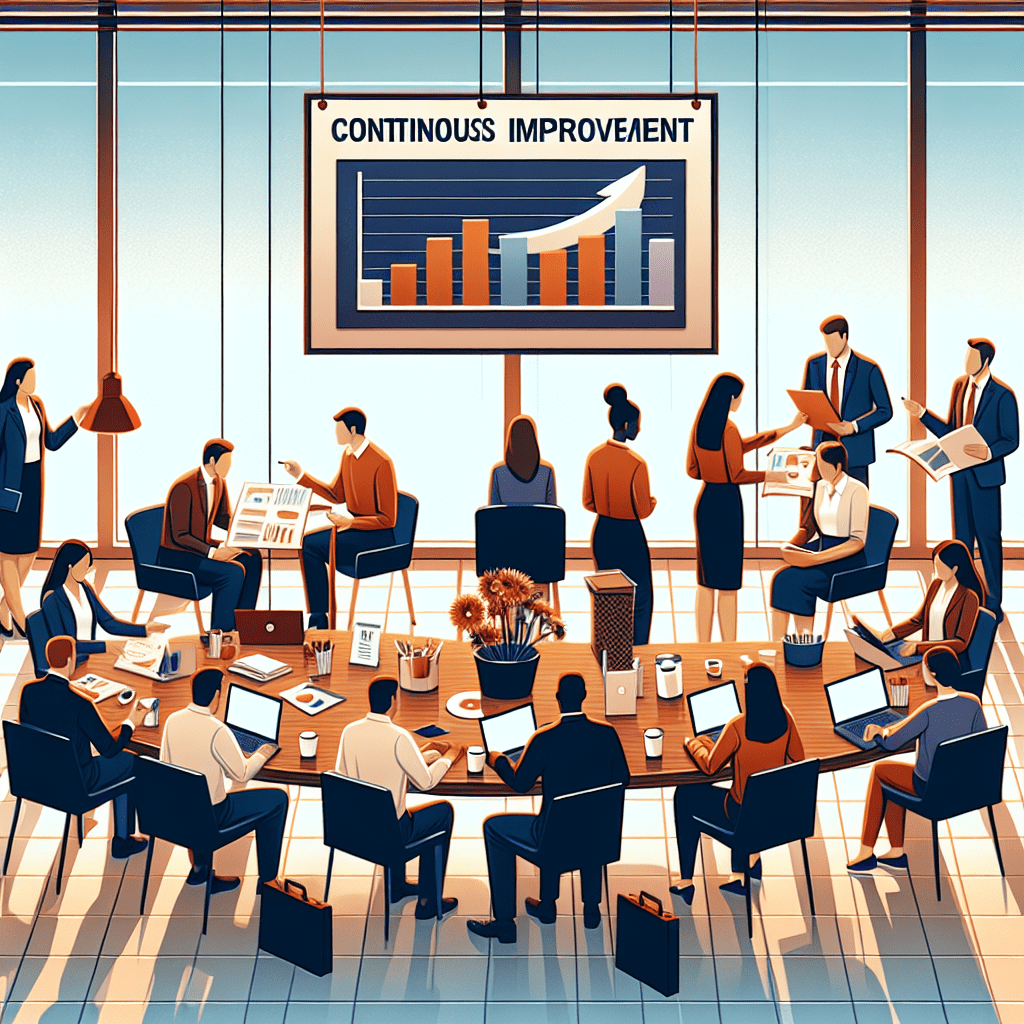
Unlocking Success: The Power of Continuous Improvement in Business

Why Continuous Improvement is a Game-Changer in Business
Alright, let’s get straight to the point: if your business isn’t embracing continuous improvement, you might as well be building sandcastles at the edge of a rising tide. The game has changed, and those who adapt will thrive while others face the storm. In today’s fast-paced world, it’s not just about efficient processes; it’s the people behind those processes who truly make the magic happen. And that’s where the real difference lies.
What Makes Continuous Improvement So Important?
Here’s the thing: businesses that lead the pack aren’t just ticking boxes. They’re busy cultivating a workforce of engaged problem-solvers. That’s a fancy way of saying they understand the value of their people. Imagine a team that’s not just there to do a job but is actively involved in making things better every single day. Sounds appealing, doesn’t it?
At City Skills, we’ve seen firsthand how focusing on continuous improvement can transform not just productivity but also workplace culture. It’s about creating an environment where everyone is encouraged to contribute ideas and solutions. But how do you achieve this? Let’s break it down.
Go and See: The Importance of First-Hand Experience
One of the most powerful concepts in continuous improvement is the principle of “Go and See”. This isn’t just some corporate jargon; it’s about rolling up your sleeves and understanding challenges firsthand. When leaders get out into the field and witness the day-to-day operations, they can appreciate the complexities involved. It’s one thing to huddle in a boardroom discussing problems and another to see those challenges in action.
When I first learned this lesson, I decided to spend a day shadowing one of our teams on the ground. You wouldn’t believe the insights I gained from simply observing and asking questions. It was a game-changer for me, and I realised that those tough situations could be tackled much more effectively with everyone’s input. Suddenly, the people in the trenches became my greatest allies in driving change.
Everybody, Every Day: Consistent Engagement
Continuous improvement isn’t a one-off initiative; it’s a way of life. The best organisations engage their teams not just occasionally, but every single day. Everyone from the newest hire to the CEO should feel empowered to share ideas and contribute to improvements. This isn’t about waiting for a formal meeting or a suggestion box; it’s about fostering an ongoing dialogue.
As I’ve often said, when people feel valued for their contributions, magic happens. You’ll see innovation bubbling up from unexpected places. Instead of waiting for a quarterly review to discuss improvements, create avenues for conversation every day. This consistency builds a culture of trust and empowers individuals to take ownership of their roles.
Discipline and Accountability: The Backbone of Continuous Improvement
Now let’s talk about discipline and accountability. Yes, these may sound like buzzwords, but they are crucial to the success of any continuous improvement initiative. Without discipline, those well-intentioned improvements can quickly become lost in the hustle and bustle of daily operations.
Accountability, on the other hand, ensures that team members take ownership of their contributions while also holding each other responsible for the outcomes. It’s about instilling a sense of pride and ownership in every team member’s work. Celebrate the wins, learn from the setbacks, and create an environment where everyone feels supported.
Embracing Continuous Improvement in Your Business
So, how do we embed these principles into our teams? Start by encouraging open communication. Foster an atmosphere where suggestions are welcomed, and problems can be discussed without fear of judgement. Make it clear that every idea is valuable, and sometimes the most innovative solutions come from the most unexpected sources.
Additionally, provide ongoing training and development opportunities to equip your team with the skills they need to innovate. When people feel supported and valued, their commitment to continuous improvement will naturally follow.
Final Thoughts
Remember, it’s all about the journey, not just the destination. I’d love to hear your thoughts on how you’re implementing continuous improvement in your workplace. What strategies have worked for you? Let’s chat over coffee—virtually or otherwise. After all, the best ideas often come from a good conversation.



